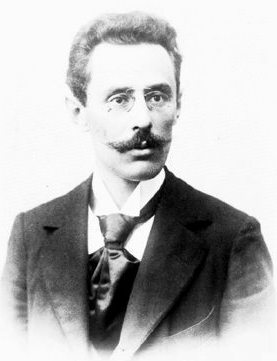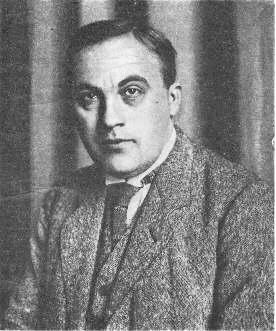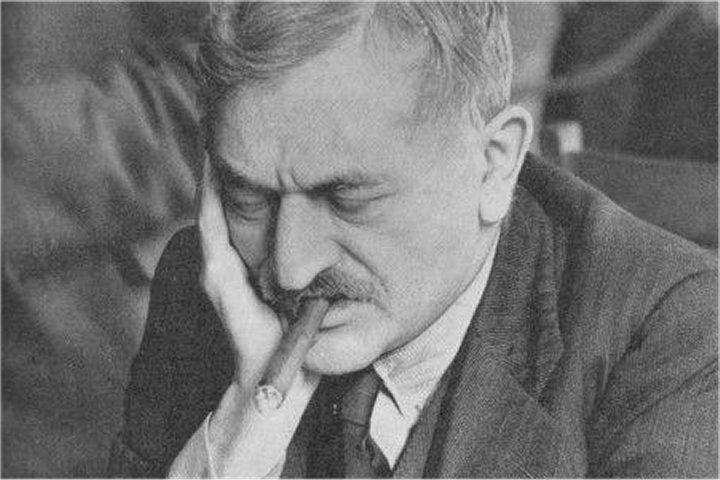New York 1924, Round 4: Lasker dominates
In round 4, the two oldest participants in the tournament, Dawid Janowsky (*25.05.1868) and Emanuel Lasker (*24.12.1868), met. In the course of their long career, the two have played against each other many times and Janowsky has even challenged Lasker twice for the World Championship. But the overall score is devastating for Janowsky: 35 games between Lasker and Janowsky are on record, Lasker won 24, Janowsky won 4, and 7 ended in a draw.

Dawid Janowsky
Janowsky did not fare much better in game 36 of this long-term duel. Playing the Sicilian with Black Lasker soon seized the initiative after the opening and put White under constant pressure with ever new ideas and manoeuvres. In the end Janowsky found no defense and collapsed.
But the real prestige duel of the fourth round was the encounter between reigning World Champion José Raúl Capablanca and the 31-year-old Russian Alexander Alekhine. Alekhine is burning with ambition and dreams of playing a match for the world championship against the Cuban who is four year his senior. In fact, the tournament in New York actually only came about because Alekhine in 1923 had been looking for sponsors in the USA who would finance a world championship match between Alekhine and Capablanca, but the potential sponsors preferred to support a world-class tournament instead.
But it is hard to imagine that Alekhine could have serious chances in a match against Capablanca. Before the tournament in New York the two have played six games against each other, and with four wins and two draws Capablanca had no difficulties against the possible challenger.
In round 4 of the tournament in New York Alekhine was also lucky to escape with a draw. Opting for the French Defense he soon found himself in trouble and was outplayed by Capablanca in a seemingly simple position. Alekhine had to give pawn but then Capablanca did not continue energetically enough and allowed Alekhine to reach a drawn rook ending.
Efim Bogolyubov won a convincing and pretty game against Richard Reti. Bogolyubov was born on Apri 14th 1889 in Stanislavchik in the Kiev district, which was then part of the Russian Empire. Now Bogolyubov plays under the Soviet flag, but he lives with his German wife and two daughters in Triberg in Germany, where he had been interned during the war.

Efim Bogoljubow
Bogolyubov seems to be a devoted family man, and rumour has it that he insured his life for a large sum for the benefit of his family before embarking in Hamburg on the trip to New York.
But in his game against Reti Bogolyubov did not show much caution. After an energetically played opening Bogoljubow liquidated into a queenless middlegame in which he showed how powerful opposite-coloured bishops can be. With a nice exchange sacrifice he finished the game in style.
Edward Lasker suffered an unfortunate loss against Frederick Yates. In a game that had been equal for a long time Lasker blundered in the endgame and suffered his first loss of the tournament.
Savielly Tartakower's opening play once again provoked wonder and amusement. The witty journalist claimed that he had visited the New York Zoo and watched an orangutan there, who inspired him to start his game against Geza Maroczy with 1.b4!? – a move that Tartakower claims to remind him of an orangutan climbing up a tree. Whatever one may think of this story and this opening experiment – Maroczy could not refute Tartakower's unusual first move and after a few errors and mistakes the game finally ended in a draw after 54 moves.
After four rounds, Tartakower is still sole first with 3 out of 4, but the fact that one of the eleven participants always has a bye in each round distorts the table. Looking at the percentages with 2½/3 Emanuel Lasker has the best result of all eleven participants.
Results of round 4
D. Janowsky 0-1 Em. Lasker
J.R. Capablanca ½-½ A. Alekhine
E. Bogoljubow 1-0 R. Reti
F. Yates 1-0 Ed. Lasker
S. Tartakower ½-½ G. Maroczy
Bye: Frank Marshall
Standings after round 4
Games
Links

























